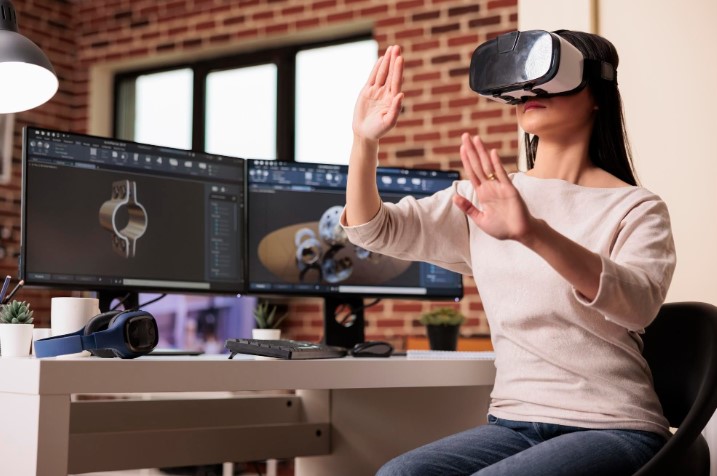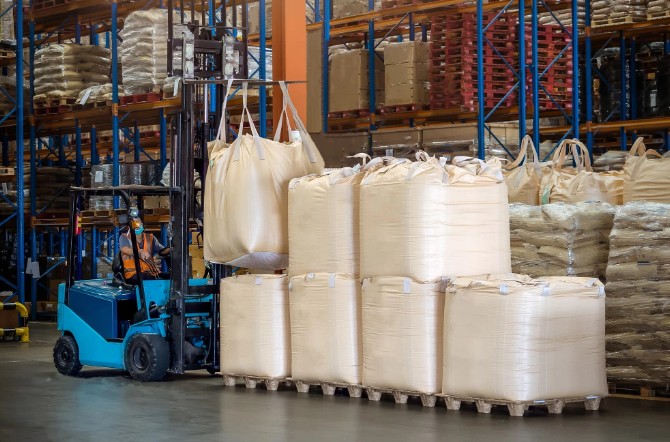VR Unleashed: Elevating Safety and Efficiency in Manufacturing – A Crucial Imperative for Large-Scale Success
In the intricate dance of gears and the hum of industrial innovation, safety and efficiency stand as non-negotiable pillars for every large manufacturer. The advent of Virtual Reality (VR) technology has emerged not just as an option but as a vital catalyst in transforming the manufacturing landscape. Here’s a deep dive into how VR is…

In the intricate dance of gears and the hum of industrial innovation, safety and efficiency stand as non-negotiable pillars for every large manufacturer. The advent of Virtual Reality (VR) technology has emerged not just as an option but as a vital catalyst in transforming the manufacturing landscape. Here’s a deep dive into how VR is boosting safety and efficiency, making its integration a necessity for every large manufacturer.
Learn more about how VR help boosting business and manufactory efficiency
Immersive Safety Training:
In the dynamic world of manufacturing, safety is paramount. VR offers a groundbreaking approach to safety training by immersing workers in realistic scenarios. From emergency response drills to hazard recognition, VR simulations enable workers to experience and learn from potentially dangerous situations without any real-world risks.
Risk-Free Equipment Familiarization:
Large manufacturers deal with an array of complex machinery. VR facilitates risk-free familiarization with equipment through realistic simulations, allowing operators and engineers to interact with machinery virtually before doing so in the physical workspace. This not only reduces the risk of accidents but also enhances confidence and competence.
Efficient Onboarding and Training:
Large-scale manufacturing often involves a sizable workforce, and the onboarding process can be time-consuming. VR streamlines this by providing immersive, hands-on training experiences. New hires can familiarize themselves with equipment and processes in a controlled virtual environment, significantly reducing the learning curve and improving overall efficiency.
Real-Time Protocols and Procedures:
Manufacturing environments require strict adherence to protocols and procedures. VR enables the creation of real-time simulations for various scenarios, ensuring that workers are well-prepared for any situation. This not only enhances safety but also contributes to the overall efficiency of operations.
Data-Driven Continuous Improvement:
VR solutions in manufacturing are not just about the virtual experience; they are also powerful tools for data collection. Manufacturers can gather valuable insights into worker performance, identify areas for improvement, and refine training programs accordingly. This data-driven approach contributes to a culture of continuous improvement, fostering both safety and efficiency.
Why Every Large Manufacturer Needs to Implement VR:
1. Risk Mitigation: Large manufacturers often face higher risks due to the scale and complexity of their operations. VR provides a proactive approach to risk mitigation by preparing workers for potential hazards, reducing the likelihood of accidents, and minimizing downtime.
2. Cost Savings: Investing in VR for safety and efficiency training may seem like an upfront cost, but the long-term benefits far outweigh the initial investment. Reduced accidents, lower training costs, and increased efficiency contribute to substantial cost savings over time.
3. Competitive Edge: In a globalized market, large manufacturers are in constant competition. Those who embrace cutting-edge technologies like VR gain a significant competitive edge. Efficient operations and a stellar safety record not only attract top talent but also enhance the reputation of the company in the industry.
4. Adaptability to Change: The manufacturing landscape is ever-evolving, with technological advancements and market shifts. VR is inherently adaptable, allowing manufacturers to update and modify training modules to keep pace with industry changes. This adaptability ensures that the workforce is always equipped with the latest knowledge and skills.
In conclusion, the integration of Virtual Reality into manufacturing processes is not just a luxury but a strategic imperative for large manufacturers. It’s the key to unlocking a future where safety is non-negotiable, and efficiency is not just a goal but a guaranteed outcome. The manufacturing giants of tomorrow are the ones who recognize the transformative power of VR today.
Learn more about how VR help boosting business and manufactory efficiency






